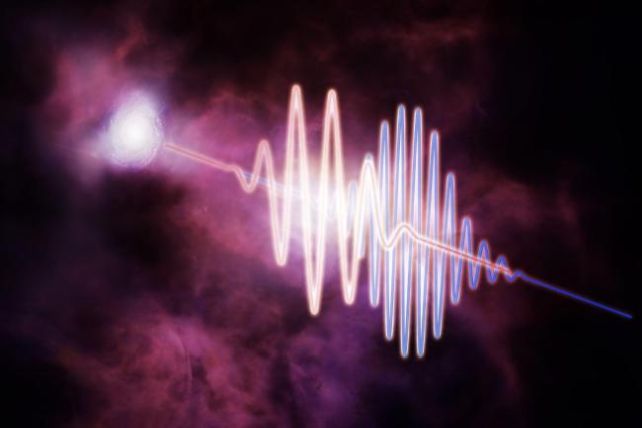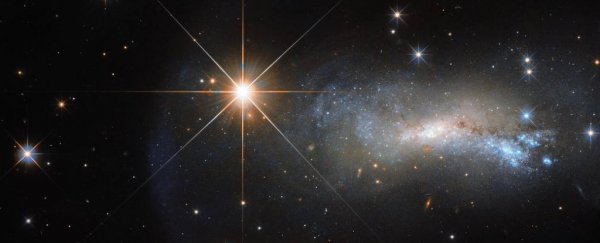By tracing powerful radio signals back to their host galaxies near the beginning of time, astrophysicists have pinpointed where the Universe's missing matter is hiding.
In the space between the galaxies, so tenuous we could never see it with our eyes, matter drifts in sufficient quantities to be detectable in the fast radio bursts (FRBs) that tear through space-time with the power of 500 million Suns.
It's yet another measurement that contributes to resolving the problem of where half the normal matter in the Universe got to, a lack that has puzzled scientists for decades.

"The decades-old 'missing baryon problem' was never about whether the matter existed," says astrophysicist Liam Connor of the Harvard-Smithsonian Center for Astrophysics. "It was always: Where is it? Now, thanks to FRBs, we know: three-quarters of it is floating between galaxies in the cosmic web."
Normal matter, made up of baryonic particles, makes up around 5 percent of the matter-energy composition of the Universe. It accounts for everything we can directly detect – the stars, galaxies, planets, dust, black holes, gas, even we humans, are all made of normal matter.
Thanks to the glow left over from the Big Bang known as the Cosmic Microwave Background, we know how much baryonic matter was around at the beginning of everything. When astronomers compared this amount with the amount of visible matter seen in the sky, a huge discrepancy arose: there seemed to be only around half as much as there should be.

In recent years, hints of the missing half have started to emerge in the nearly-empty space that yawns between the galaxies. There, matter is so tenuous that our instruments can't detect it; but, a few years ago, astronomers discovered that there was enough of it to stretch the millisecond signals of FRBs.
FRBs are a huge mystery in and of themselves. As the name implies, they are very rapid, very explosive bursts of radio waves that are extremely powerful, but last just a fraction of a second. The current best explanation for them is erupting magnetars.
Whatever makes them, they arrive from all over the sky, from a huge range of distances. The most distant detected traveled for 9.1 billion years to reach us; others come from much closer. Connor and his colleagues studied 60 FRBs, carefully examining each signal to look for the signs it traveled through baryonic matter on its way to Earth.
"FRBs act as cosmic flashlights," Connor says. "They shine through the fog of the intergalactic medium, and by precisely measuring how the light slows down, we can weigh that fog, even when it's too faint to see."

According to the team's reckoning, most of the normal matter in the Universe is hanging out in the void as part of the intergalactic medium, mostly as hydrogen gas – around 76 percent. Another 15 percent of the matter is in the dark matter haloes that envelop galaxies and galaxy clusters. The remainder is what makes up galaxies themselves – the stars and the interstellar medium between them.
Astronomers will no doubt continue to look for baryonic matter throughout the Universe. Where it lies, and how it got there, will tell us a lot about how the Universe evolved over its 13.8 billion-year lifespan. This result neatly answers the question of where it is; now we need to know the how.
"It's a triumph of modern astronomy," says astronomer Vikram Ravi of Caltech.
"We're beginning to see the Universe's structure and composition in a whole new light, thanks to FRBs. These brief flashes allow us to trace the otherwise invisible matter that fills the vast spaces between galaxies."
The research has been published in Nature Astronomy.
